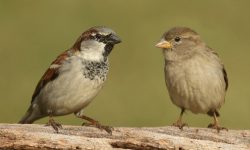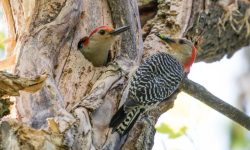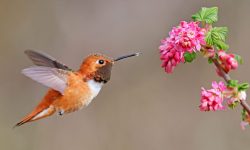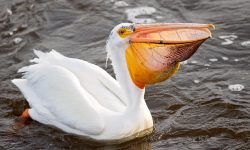The capybara (Hydrochoerus hydrochaeris) is the largest rodent on Earth, easily recognized by its barrel-shaped body, gentle expression, and semi-aquatic lifestyle. Native to South America, this herbivorous mammal thrives in wetlands, riversides, and grasslands, often seen lounging in muddy banks or swimming gracefully across lakes. But what exactly fuels this gentle giant? Understanding the capybara’s diet reveals not just its biology, but also its ecological role as a vital herbivore in tropical ecosystems.
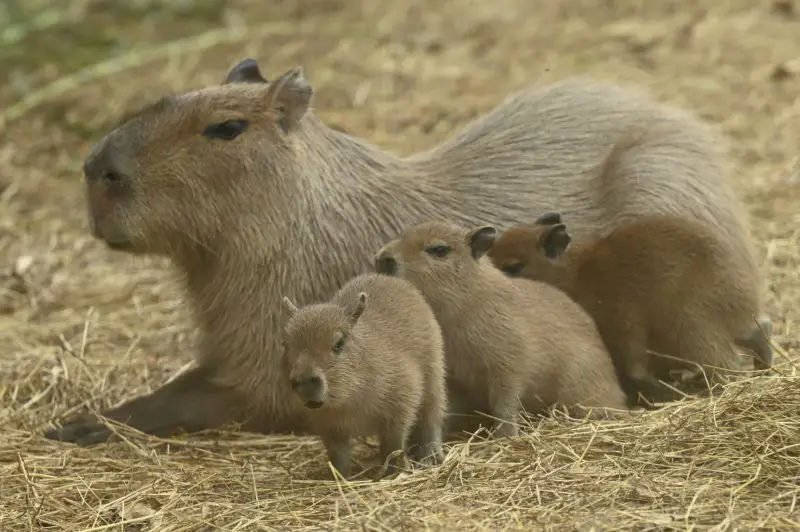
What Do Capybaras Eat in the Wild?
The wild diet of the capybara is a fascinating testament to how evolution has shaped the largest rodent on Earth into a highly efficient herbivore. Unlike opportunistic mammals that shift between food sources, capybaras are strictly herbivorous, relying exclusively on a diverse menu of plant matter. What sets them apart is their ability to thrive on high-fiber, low-nutrient vegetation—thanks to their remarkably adapted digestive system and selective feeding habits.
Aquatic Plants: Nature’s Hydrating Buffet
At the heart of the capybara’s diet is a rich variety of aquatic vegetation, which grows abundantly in the freshwater wetlands, marshes, and riverbanks that make up their natural habitat. These water-loving rodents wade through shallow lagoons and slow-moving streams to nibble on submerged stems and floating leaves. Some of their favorite aquatic plants include:
-
Water hyacinth (Eichhornia spp.)
-
Duckweed (Lemna spp.)
-
Water lettuce
-
Floating pondweed (Potamogeton spp.)
These plants are not only easy to chew with the capybara’s strong, ever-growing incisors, but also serve as vital sources of hydration, fiber, and essential micronutrients. In hot and humid environments where water loss through evaporation is constant, this water-rich vegetation helps capybaras maintain fluid balance and thermoregulation without needing to drink frequently. The soft structure of aquatic plants also reduces wear on their teeth while maximizing nutrient uptake.
Terrestrial Grasses and Sedges: Endless Grazing Machines
When they aren’t foraging in water, capybaras transform into relentless grazers, roaming through grasslands and forest edges in search of the freshest blades. They prefer lush, green grasses and moist sedges, especially during the cooler hours of the day—at dawn and dusk—when plant moisture content is highest.
Among the most commonly grazed species are:
-
Paspalum spp. and Panicum spp. (nutrient-rich tropical grasses)
-
Wetland sedges and rushes
-
Native savanna grasses and field forbs
These fibrous grasses provide the bulk energy needed to support the capybara’s robust frame and are critical for the constant wear required to keep their continuously growing teeth at manageable lengths. Grazing is a near-constant activity, with capybaras spending up to eight hours a day feeding—a rhythm that reflects both their slow metabolism and the low caloric density of their food.
Bark, Stems, and Leaves: Survival Food in Tough Times
During dry seasons or periods of food scarcity, capybaras adapt by expanding their dietary range to include tougher plant materials that other animals might ignore. They gnaw on the tender bark of saplings, chew woody stems, and strip shrubs of their leaves to maintain fiber intake and gut health.
These fallback foods are harder to digest but still vital for survival. They stimulate gut motility, encourage microbial fermentation in the cecum, and provide mechanical wear for their incisors. This behavior highlights the capybara’s dietary flexibility, allowing it to persist in seasonally dry environments or heavily grazed areas where aquatic plants have been depleted.
Foraging Behavior: How Capybaras Find Their Food
Capybaras are not just passive grazers—they are highly adaptive foragers with complex social structures and spatial intelligence that enhance their ability to locate and utilize food resources efficiently. Their foraging behavior reflects a delicate balance between nutritional needs, predator avoidance, and environmental rhythms.
Diurnal and Crepuscular Feeding Patterns
In their natural, undisturbed habitats, capybaras exhibit diurnal to crepuscular feeding habits, with peak foraging periods occurring during the cool hours of dawn and dusk. These time windows help them avoid the midday heat of tropical and subtropical environments, reducing the risk of overheating while maximizing access to water-rich vegetation.
However, in regions with significant human presence—such as agricultural fields, parks, or riverbanks near settlements—capybaras often exhibit a behavioral shift to nocturnal activity. This shift is an example of behavioral plasticity: by feeding under cover of darkness, they minimize contact with people, pets, and potential threats, while still maintaining their nutritional intake. Thermal regulation, human avoidance, and predator pressure all influence this flexible feeding schedule.
Social Foraging and Vigilance
Capybaras typically forage in groups ranging from 10 to 30 individuals, with some larger aggregations forming around abundant food or water sources. This group foraging strategy provides several advantages:
-
Increased predator detection: While some individuals graze, others remain alert, scanning for danger. This collective vigilance dramatically lowers the chance of surprise attacks by predators such as jaguars, caimans, or large birds of prey.
-
Efficient resource sharing: Herd dynamics allow younger or subordinate animals to follow experienced foragers to high-quality grazing patches, reducing individual search time.
Their coordinated movement through grasslands and wetlands is not random. Dominant individuals often lead the group to known feeding zones, while subordinates maintain cohesion, benefiting from social knowledge transfer.
Spatial Memory and Seasonal Mobility
Capybaras possess an impressive spatial memory, which they use to remember the location of rich foraging areas, freshwater sources, and safe resting spots. This memory becomes especially critical during seasonal droughts or flooding events, when food becomes patchy and unpredictable.
In response to environmental change, capybaras may travel considerable distances to reach alternate food zones. Some populations migrate between wet season floodplains and dry season refuges, navigating with precision through their home ranges. This movement is not haphazard—it reflects their deep familiarity with their habitat and the seasonal cycles that shape it.
Their ability to integrate social behavior, environmental cues, and cognitive mapping into a dynamic foraging strategy is one of the key reasons why capybaras are so successful across diverse landscapes—from remote wetlands to the edges of human civilization.
Coprophagy: Recycling for Survival
Among the many surprising adaptations of the capybara, few are as essential—or as misunderstood—as coprophagy, the re-ingestion of their own feces. Though it may seem unappealing from a human perspective, this behavior is a biological necessity for capybaras and other hindgut fermenters, allowing them to extract maximum nutrition from their fibrous, plant-based diet.
The Hidden Engine: Hindgut Fermentation
Capybaras possess a highly specialized digestive system centered around the cecum, a large fermentation chamber located in the lower part of the intestine. Unlike ruminants such as cows, which digest fiber in their foregut through repeated regurgitation, capybaras process most of their plant material after it has passed through the stomach and small intestine.
Inside the cecum, symbiotic bacteria break down cellulose and ferment plant fibers, producing essential nutrients like vitamin B-complex, vitamin K, short-chain fatty acids, and amino acids. However, by the time this fermentation occurs, the capybara’s body has already passed the main site of nutrient absorption.
To overcome this challenge, capybaras re-ingest their soft, nutrient-rich cecotropes—a special type of feces produced during fermentation. These cecotropes are moist, pellet-like, and packed with beneficial microbes, partially digested fiber, and vitamins. By consuming them directly from the anus, typically during resting periods, the capybara gives its digestive system a second chance to absorb these valuable nutrients.
Why Coprophagy Matters
This behavior is far from wasteful—in fact, it’s vital for:
-
Maximizing nutrient extraction from a low-protein, high-fiber diet
-
Maintaining a balanced gut microbiome for ongoing digestive health
-
Ensuring survival in environments where high-quality forage is limited
Without coprophagy, capybaras would be unable to meet their metabolic demands on a diet composed largely of tough grasses and aquatic plants. It’s an elegant solution to a dietary problem faced by herbivores across ecosystems.
Occasional Fruits and Vegetables: Nature’s Treats
While grasses and aquatic vegetation form the backbone of their daily intake, capybaras are not entirely immune to the allure of sweeter, more nutrient-dense foods—particularly when opportunity presents itself.
In the wild, capybaras may browse on fallen fruits, tender vegetable matter, or even agricultural crops near human settlements. This behavior becomes more common during the wet season, when fruiting trees release an abundance of soft, carbohydrate-rich food. Some of their preferred occasional treats include:
-
Bananas – rich in potassium and sugar
-
Mangoes and papayas – tropical fruits loaded with antioxidants and beta-carotene
-
Carrots and pumpkin – high in fiber, vitamin A, and easy to chew
-
Squash and melons – hydrating and mildly sweet
However, fruit and vegetable consumption makes up only a small fraction of the capybara’s overall diet. These items serve as supplemental energy sources, especially helpful during high-demand periods like molting, breeding, or recovery from illness. In healthy ecosystems, capybaras obtain most of what they need from native vegetation, relying on fruit opportunistically rather than habitually.
What Should Humans Feed Capybaras?
Whether in wildlife sanctuaries, zoological parks, or domestic settings, feeding capybaras responsibly requires a deep understanding of their natural dietary ecology. As strict herbivores with a delicate digestive balance, capybaras thrive on diets rich in fiber, moisture, and plant-based nutrients. Replicating their wild intake is crucial to ensure their health, longevity, and behavioral well-being.
Ideal Foods for Captive Capybaras
To support healthy digestion and dental wear, capybaras in human care should be provided with a base diet centered around high-fiber forage, mimicking the roughage they would consume in wetlands and grasslands. Recommended staples include:
-
Timothy hay, Bermuda grass, or orchard grass hay
These coarse, dry grasses help maintain healthy gut motility and naturally file down the capybara’s ever-growing incisors. -
Leafy greens
Varieties like kale, collard greens, romaine lettuce, and mustard greens offer essential vitamins (A, C, and K), calcium, and trace minerals. Avoid iceberg lettuce, which lacks nutritional value. -
Root vegetables and fibrous produce
Items such as carrots, sweet potatoes (raw or lightly steamed), corn husks, green beans, and squash provide both fiber and energy. They also encourage chewing and natural foraging behavior. -
Fruits in moderation
Apples (without seeds), papayas, mangoes, bananas, and melons can be offered sparingly. These fruits are rich in sugars and should be considered occasional enrichment treats—not dietary staples. -
Commercial rodent herbivore pellets
Specially formulated pellets for guinea pigs or capybaras, when available, can help balance nutritional intake—especially in facilities with limited access to fresh forage.
All fresh produce should be washed thoroughly and cut into manageable sizes to prevent choking. It’s also beneficial to scatter food or use feeding puzzles to stimulate natural grazing behaviors and reduce boredom.
Foods to Avoid: Keeping Capybaras Healthy
Not all human foods are suitable—or even safe—for capybaras. The following should always be avoided:
-
Bread, pasta, and processed grains
These low-fiber, high-carb items offer little nutritional value and can disrupt the gut flora, leading to bloating or diarrhea. -
Dairy and animal products
Capybaras are lactose intolerant and obligate herbivores. Dairy can cause severe digestive upset. -
Sugary snacks, chocolate, or candy
High sugar content not only contributes to obesity and dental decay but also increases the risk of insulin dysregulation. -
Salty or seasoned foods
Sodium toxicity is a serious concern for herbivorous animals, and spices or sauces may contain ingredients that are toxic or irritative. -
Moldy or spoiled food
Rotting vegetation can harbor harmful bacteria or fungi, leading to gut infections or mycotoxin poisoning.
Maintaining a proper feeding routine—along with access to clean drinking water, safe space for exercise, and social interaction—is essential for preventing health issues such as gastrointestinal stasis, malnutrition, dental overgrowth, and behavioral stress.
Conclusion: A Gentle Grazer with a Complex Diet
The capybara’s diet is a reflection of its peaceful, water-loving nature. From submerged aquatic plants to sun-drenched savanna grasses, this giant rodent has evolved remarkable adaptations to extract nutrients from tough plant material. Its grazing habits help shape wetland ecosystems, supporting biodiversity and even preventing overgrowth of invasive aquatic vegetation. Whether observed in the wild or in human care, the capybara reminds us that even the world’s largest rodent thrives on simplicity, community, and good fiber.

